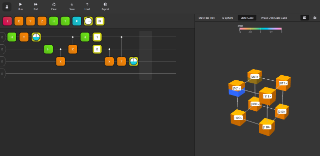Center for Applied Quantum Computing (ZAQC)
Quantum computing has become something of a buzzword. In the spring of 2021, the first commercially useable quantum computer went into operation in Germany as a collaborative venture between IBM and Fraunhofer. After receiving funding approval from HMinD (Hessian Ministry for Digital Strategy and Development) and HMWK (Hessian Ministry of Science and the Arts), Fraunhofer IGD began work in the field of quantum computing in May 2022 with the goal of establishing the Center for Applied Quantum Computing (ZAQC). In line with the digital strategy of the German federal state of Hessen, ZAQC aims to identify all meaningful application opportunities for quantum computing, to evaluate, prioritize, and quickly make them usable for industry and business, as well as society as a whole.
While quantum computers can fundamentally be used in the same way as their conventional counterparts, exploiting their full potential calls for a different approach to computing, i.e., probabilistic rather than deterministic; working with entangled qubits rather than independent bits; with continuous superpositions of an exponentially growing number of states while producing digital results; and with states that cannot be copied. Only by considering these special properties—and only for certain problems—can quantum computing fulfill the promise of exponential speedups and be successfully deployed—always in the role of a coprocessor.
We are currently in the Noisy Intermediate Scale Quantum Computing (NISQ) stage of quantum computing. This means that currently available quantum computers still have a small number of qubits, as well as error-prone, noisy gates, and only briefly stable, coherent quantum states.
ZAQC is researching the types of problems that can be solved with quantum computing in the medium term. The focus is on chemical/pharmaceutical application areas, as early applicability can be expected in these fields. This is supported by close cooperation with the Innovation Center Innovative Therapeutics (TheraNova).
 Fraunhofer Institute for Computer Graphics Research IGD
Fraunhofer Institute for Computer Graphics Research IGD


